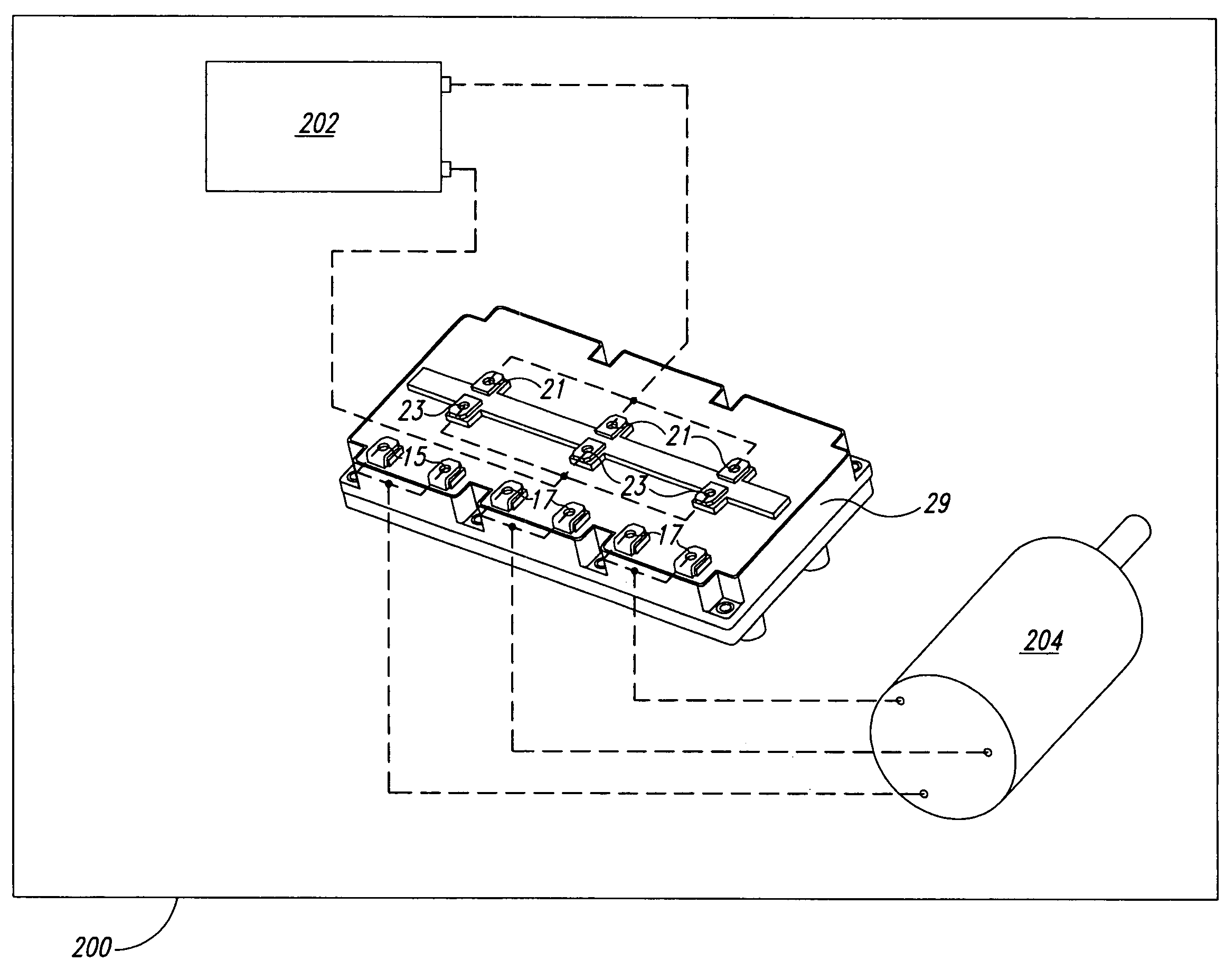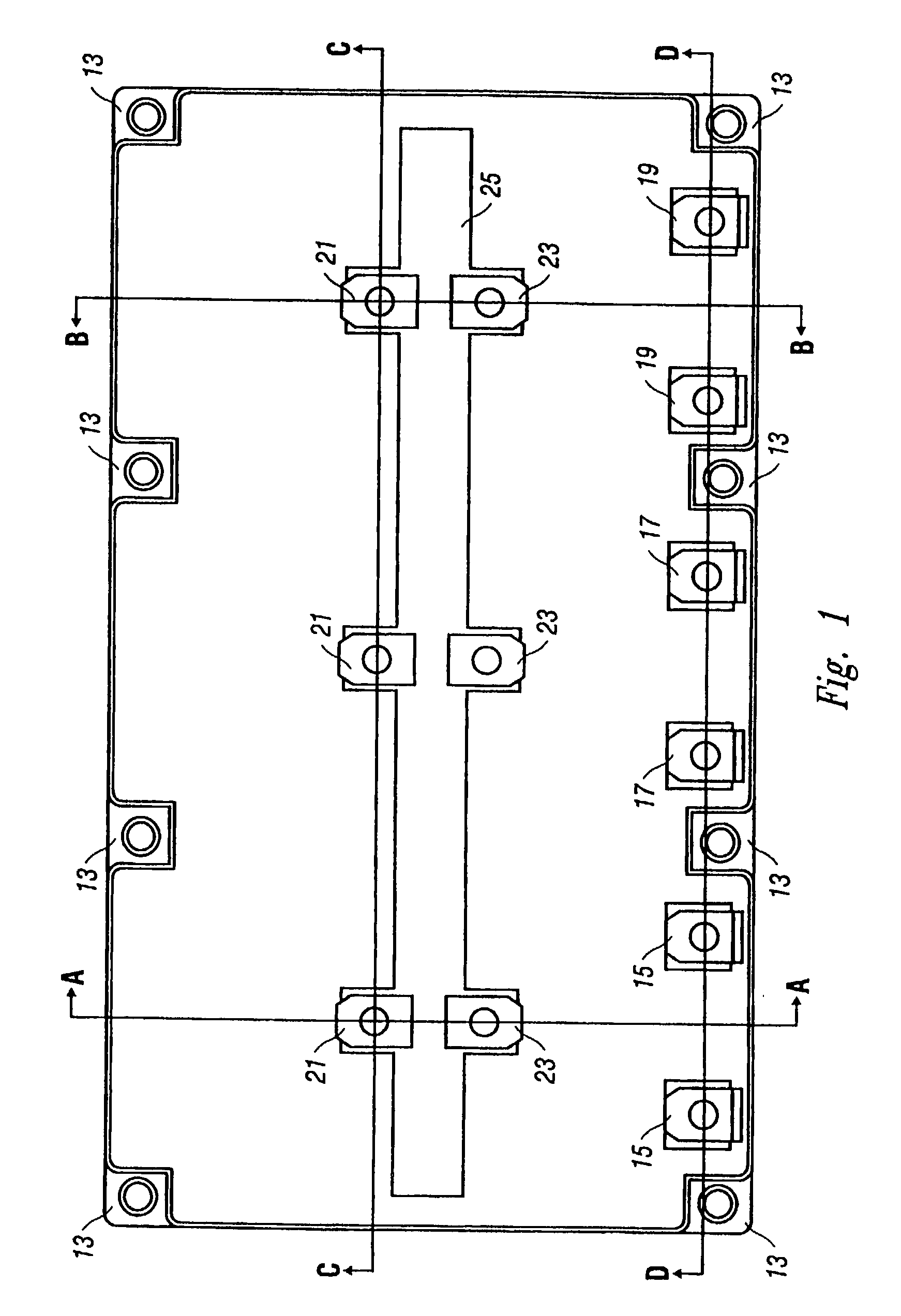Leadframe-based module DC bus design to reduce module inductance
a leadframe and module technology, applied in the field of direct current buses, can solve the problems of inductive power loss, reduced efficiency, excess heat generation, and reduced switching efficiency, and achieve the effect of reducing inductive poser losses, and reducing switching efficiency
- Summary
- Abstract
- Description
- Claims
- Application Information
AI Technical Summary
Benefits of technology
Problems solved by technology
Method used
Image
Examples
Embodiment Construction
[0036]In accordance with the invention, a DC bus is used in a power module, and the DC bus is shaped and positioned to minimize current loops, voltage overshoots and their associated inductance losses, to provide for symmetric current flow. Reference is made herein to a power module with three phase terminals for use with a three-phase motor and having three bridges, each with two switching pairs. As will be appreciated by one of ordinary skill in the art, the disclosed power module, DC bus, and method for reducing inductance in a power module could be used on a power module with any number of phase terminals and bridges, and having any number of switching pairs. Nonetheless, for ease of description, reference is made to a three-phase power module.
[0037]Referring to FIG. 1, an overhead view of the top of the power module is shown. The module has three positive leads 21 that are connectable to a power source 202 (FIG. 14), such as a battery, and three negative leads 23 that are likew...
PUM
| Property | Measurement | Unit |
|---|---|---|
| dielectric strength | aaaaa | aaaaa |
| thickness | aaaaa | aaaaa |
| thickness | aaaaa | aaaaa |
Abstract
Description
Claims
Application Information
 Login to View More
Login to View More - R&D
- Intellectual Property
- Life Sciences
- Materials
- Tech Scout
- Unparalleled Data Quality
- Higher Quality Content
- 60% Fewer Hallucinations
Browse by: Latest US Patents, China's latest patents, Technical Efficacy Thesaurus, Application Domain, Technology Topic, Popular Technical Reports.
© 2025 PatSnap. All rights reserved.Legal|Privacy policy|Modern Slavery Act Transparency Statement|Sitemap|About US| Contact US: help@patsnap.com



